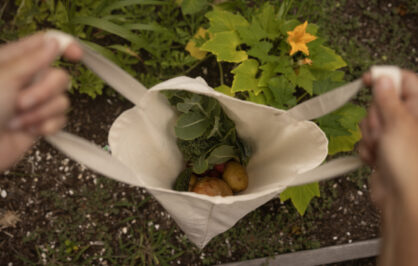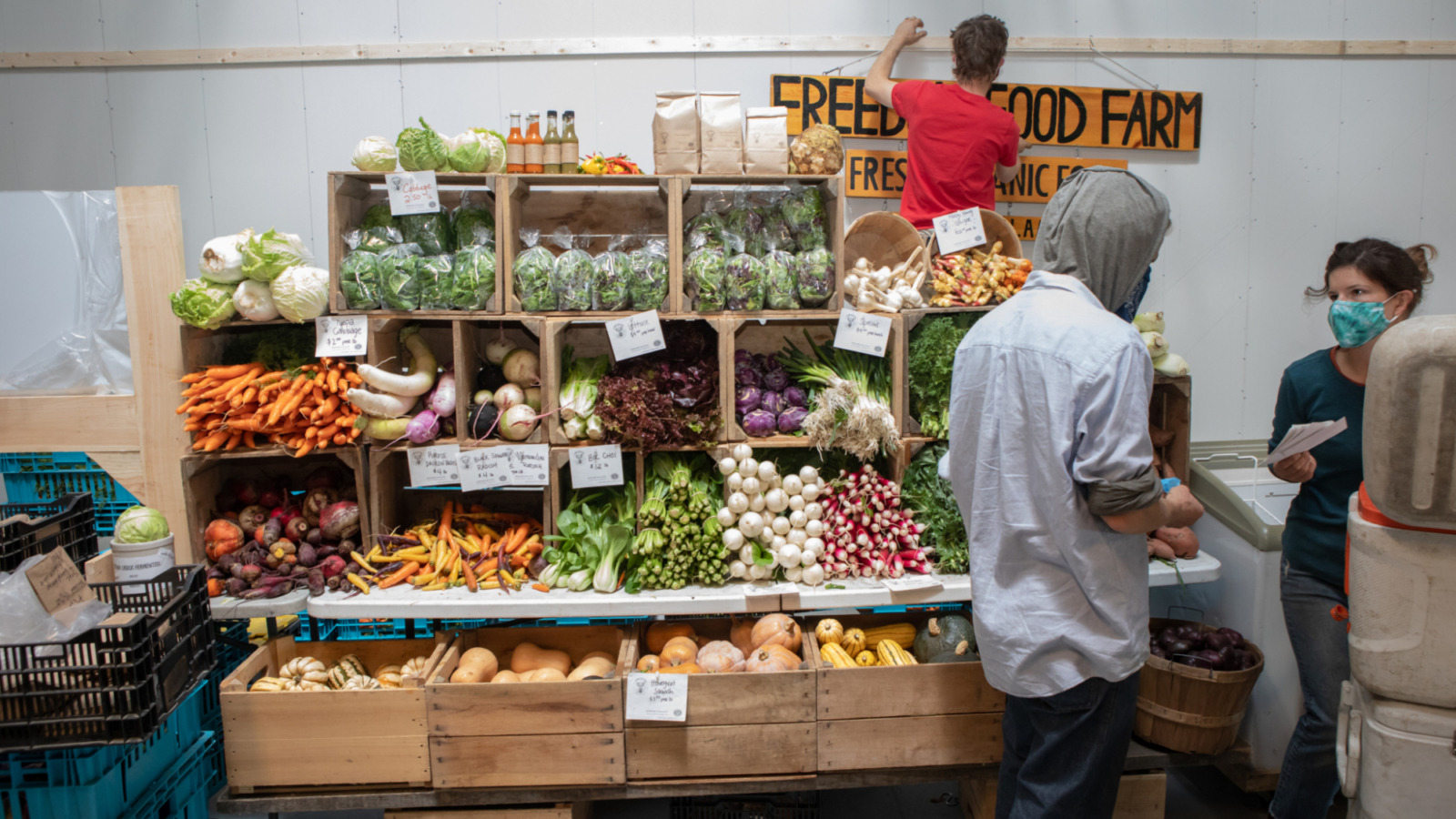
Impact
No Local Farmers, No Local Food
In some states, you would need to drive for hours before you could talk to a farmer—fortunately, this is not so in Rhode Island. Nonetheless, even in our tiny state, there is somewhat of a disconnect between farmers and non-farmers. Romantic notions abound about those who choose farming as a livelihood—bib overalls and chewing on a piece of straw. Farming is not a lifestyle—it’s a business.
Due to its small land area, Rhode Island had the lowest amount of land in agriculture—59,076 acres— and the second lowest agricultural sales—$86.6 million—of any state based on 2022 data. A consequence of Rhode Island’s relatively small land base, coupled with intense development pressure, is that it has the most expensive farmland in the country: $22,000 per acre. From 1945 to 2022, farmland as a percentage of Rhode Island’s total land area decreased from 40% (264,734 acres) to 8.9% (59,076 acres). “Even the large farms in Rhode Island aren’t large farms—they are all small,” says Nessa Richman, executive director of the RI Food Policy Council (RIFPC).
Federal Cuts Devastate Local Food Systems
Recent federal budget cuts have disproportionately harmed small farmers, impacting their livelihoods and the local food systems they support. Cuts to United States Department of Agriculture (USDA) programs like Local Food Purchase Assistance (LFPA) and Local Food for Schools (LFS) have led to lost revenue and disruption in the flow of local produce to schools, food banks, and other community outlets.
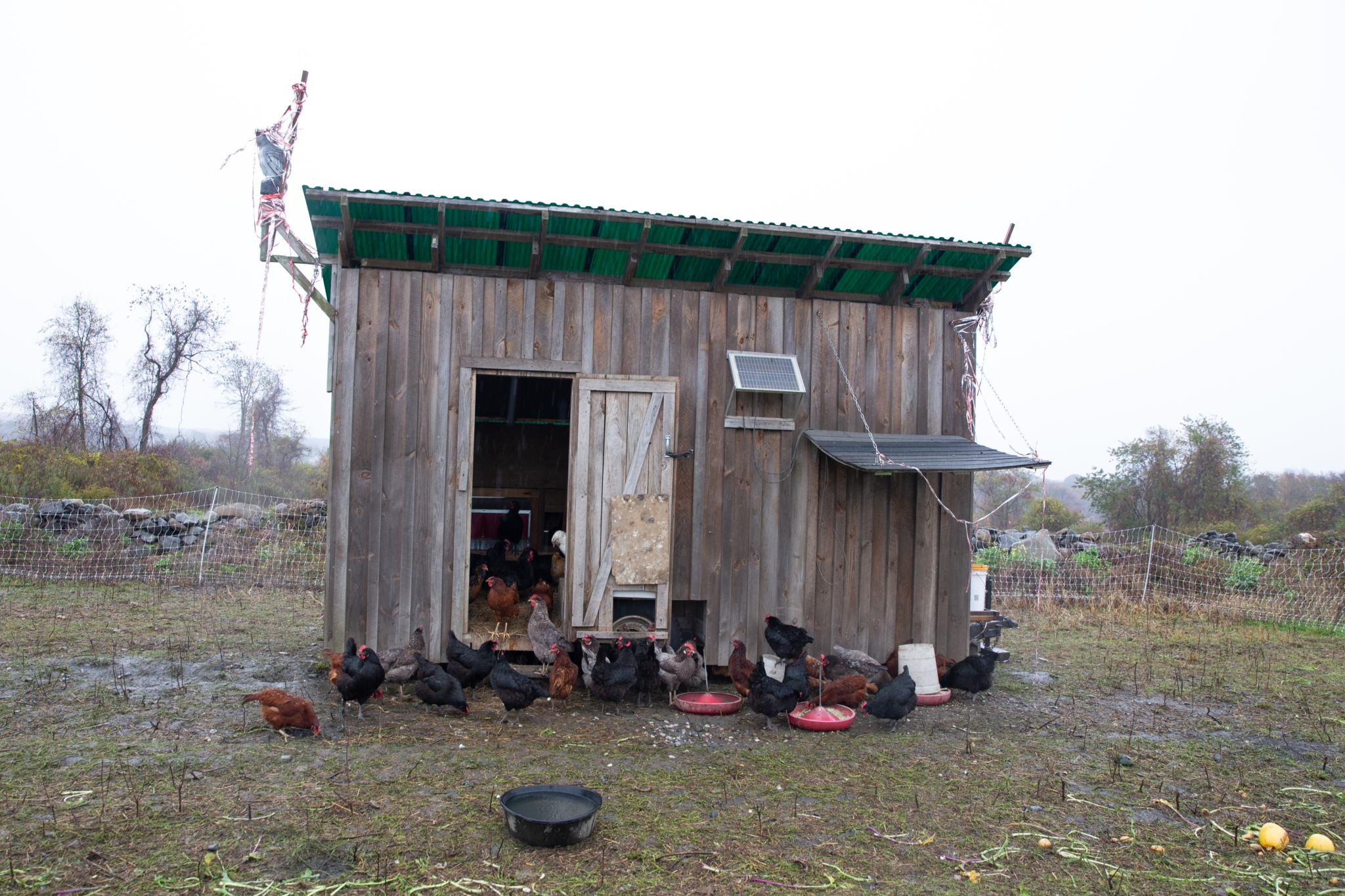
The Rhode Island Foundation has long supported food delivery agencies throughout the state, but our funding alone cannot make up for the loss of these federal grants and programs. “About 115 farmers within the state were selling into LFPA and LFS programs, which were implemented by the USDA under President Biden in 2021, providing states with money to provide local produce and seafood to food pantries and other programs,” says Nessa. Former USDA Secretary Tom Vilsack designed these programs to strengthen local and regional food systems for the long term, and that is what they’ve done here in Rhode Island. Specifically, they provided funding to RIDEM that was then passed through intermediaries like Farm Fresh Rhode Island, Southside Community Land Trust, and the Commercial Fisheries Center of RI to buy food and distribute it to Rhode Islanders in need.
It’s hard to overstate how thoroughly recent federal changes have disrupted farmers’ lives. The USDA is among the federal agencies that have endured the deepest cuts. This spring, the USDA suspended billions of dollars in outstanding payments for at least 15 programs for farmers and rural communities. It also cut $1 billion destined for schools and food banks and gutted regional USDA offices, which provide a vital lifeline to farm country. This has had a huge impact on the financial viability of our state’s farmers.
Real Farmers, Real Impact
Pat’s Pastured has been family-owned and farmed by husband and wife duo Patrick and Kelly McNiff since 2002. “Big systems failed us during COVID, mainly due to supply chain issues, and small local producers were still delivering. So the USDA recognizes that they need us. We bat last but we’re still here.”
“We set out to build a sustainable farm and provide wholesome food for our community, raising the highest quality grass-fed meats, enriching our land with regenerative methods, and raising our livestock as nature intended.
“We don’t own any land—we lease five different parcels—87 acres, 30 acres of which are pasture. The state needs to put money into affordable agriculture land preservation. It’s in the top three of every farmer’s list—to own the land when you put all the work into the soil.
“When a farmer can’t plan from week to week, month to month, year to year, it’s unsettling. Farming is the most expensive form of gambling—we’re making a gamble and when the whole system changes, it creates a real problem for us. Instability of weather, volatility of feed and grain prices are bad enough. There’s a long-standing farmer joke: ‘How do you make a million dollars as a farmer—start with two million.’”
The recent upheaval in the USDA has left many farmers with unfulfilled contracts and broken commitments. Grants that once offered vital financial lifelines have been frozen. Programs that once provided assistance have been eliminated. Uncertainty about the future is unsustainable and threatens our entire food system.
Organizations Adapt and Struggle
Historically, if farmers have a government contract, they’re in good shape because the government always pays. It might take a long time, but they do pay, according to Margaret DeVos, executive director of Southside Community Land Trust (SCLT).
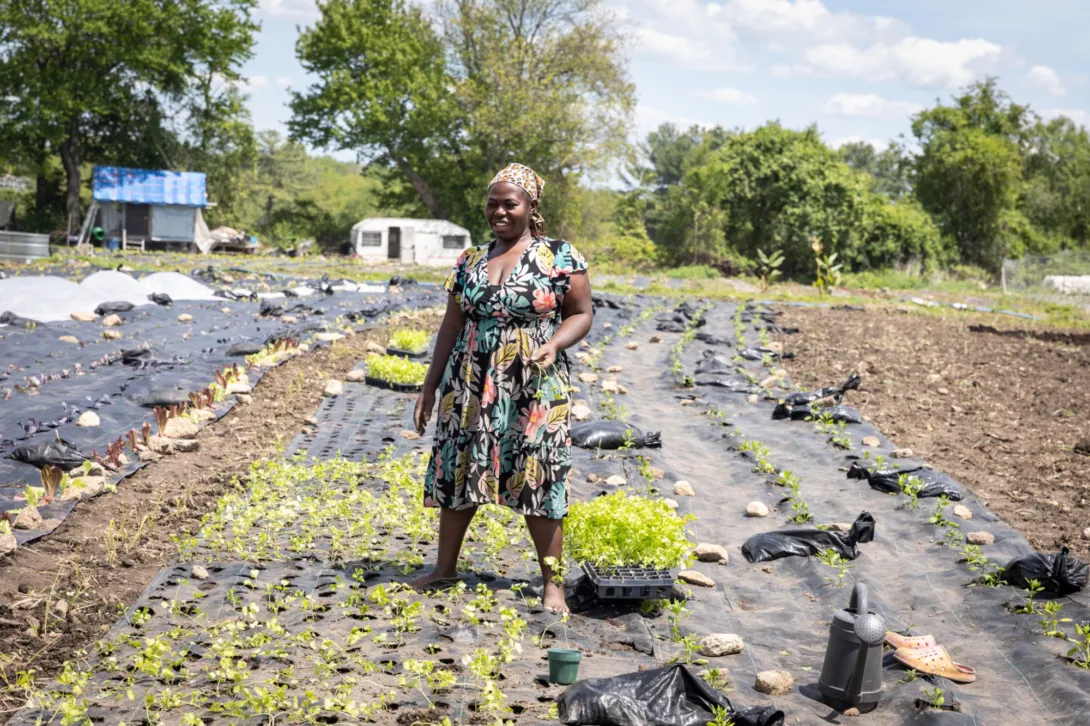
“Promises kept, promises broken—we need to make sure we are not making commitments that we cannot keep. Right now, I believe we have the backing of the federal government but at some point, it becomes an unreasonable expectation.”
The funding that came out of the pandemic got invested in farmers and land and food distribution hubs; irrigation and cold storage and fences. We now have better farm infrastructure and distribution infrastructure. “We work with 28 farmers who drop off their food at our distribution facility in South Providence and we get it distributed.”
SCLT has operated Urban Edge Farm in western Cranston for 22 years. It is land owned by RI’s Department of Environmental Management (DEM) that is leased to SCLT—one of two parcels they manage that accommodates about 14 farm businesses, all from urban low-income communities. Some of the farmers have multiple fields with typically two or three generations working together. SCLT provides and maintains three large greenhouses where farmers start their seeds. “We need more greenhouse space—we’re planted wall to wall,” says Ben Torpey, manager of Urban Edge Farm.
They provide farmers with technical, production, and marketing support with the goal that they can make a modest living from farming. There is also an educational component for those needing English and computer skills. “We manage our assistance by meeting them where they’re at. Most have a full-time job in addition to the full-time job of farming.”
According to Jesse Rye, executive director of Farm Fresh Rhode Island, about 40% of Farm Fresh revenue comes from federal sources—things in their budget that they had signed contracts for, things they could count on. “We have been able to grow with increased opportunities that came with funding from the federal government and now we have to scale back with the decreased opportunities.”
LFS and LFPA have directed millions of dollars to Rhode Island for food producers and fishermen who were working with schools, hunger relief agencies, and food pantries. “Farmers selling into these channels (often under-represented farmers—women and people of color) have been impacted the most as well as creating a tremendous hardship for an organization like ours in our role of marketing and distributing the food. Clearly this has ceased to be a federal priority—with no compassion or empathy for what it means to be a small farmer.”
Farm Fresh worked with every school district in Rhode Island to set up contracts for apples from Steere Farm, cheese from Narragansett Creamery, greens from Gotham Greens, ground beef, pork, and chicken—all matched up with the needs of the schools. “If you had asked me 15 years ago when we started if we would be able to get food in every school in the state, I would have thought it impossible. But we have done it for the past 3 years.”
Fighting for Survival and Solutions
These cuts paint a picture of a food crisis in Rhode Island for people who are already food insecure. “How do we crawl out from under this?” asks Margaret. “Scaling back, understanding the essential core things that allow us to function and still reach our mission. Help the farmers find other customers by increasing local demand; working more aggressively with restaurants, college and hospital clients. If the money has gone away in one category, try to bring it in through another category.”
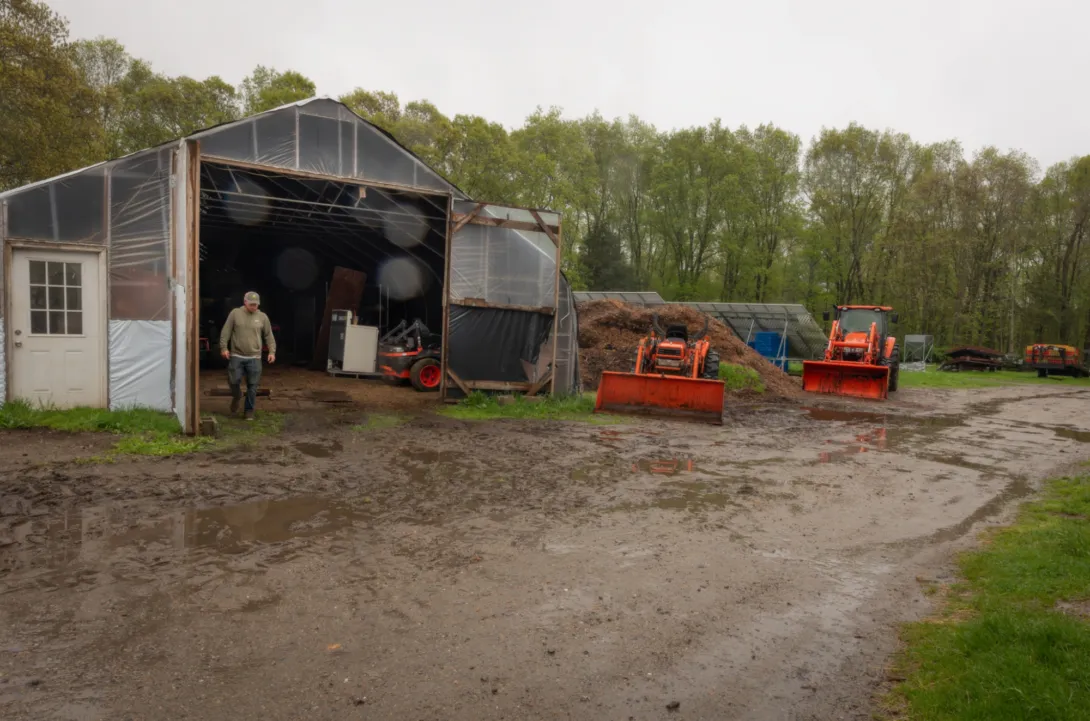
The federal cuts have resulted in job loss—Farm Fresh is down about 8 people. The AmeriCorps program has now been cut so they stand to lose 8 more people. “I keep reminding myself that we are one of tens of thousands of organizations across the country that is facing this situation,” says Jesse. “Farmers have a brother-sisterhood that is very strong,” says Patrick McNiff. “And there’s not enough money for the next generation of farmers. I want to build a farm where my son and daughter can grow vegetables or chickens if they want to—flexibility is critical to enticing the next generation.”
Margaret DeVos points out that food and farm agencies are collaborating to attract more local investment in the food system so that the federal government doesn’t totally determine our well-being. “The philanthropic community has to understand where their food comes from and what it costs to produce good food. We can’t balance the scales on the backs of farmers.”
Given that growing and producing local healthy food actually costs more than people can pay for it, the USDA has been trying to close that gap for 170 years. “We know how smart it is for low-income families to have healthy food. And it’s painful for all of us to have seen this willingness to make a difference by USDA, that when healthy food is available, all sorts of good things happen. So it is heartbreaking to have this support wiped away.”


